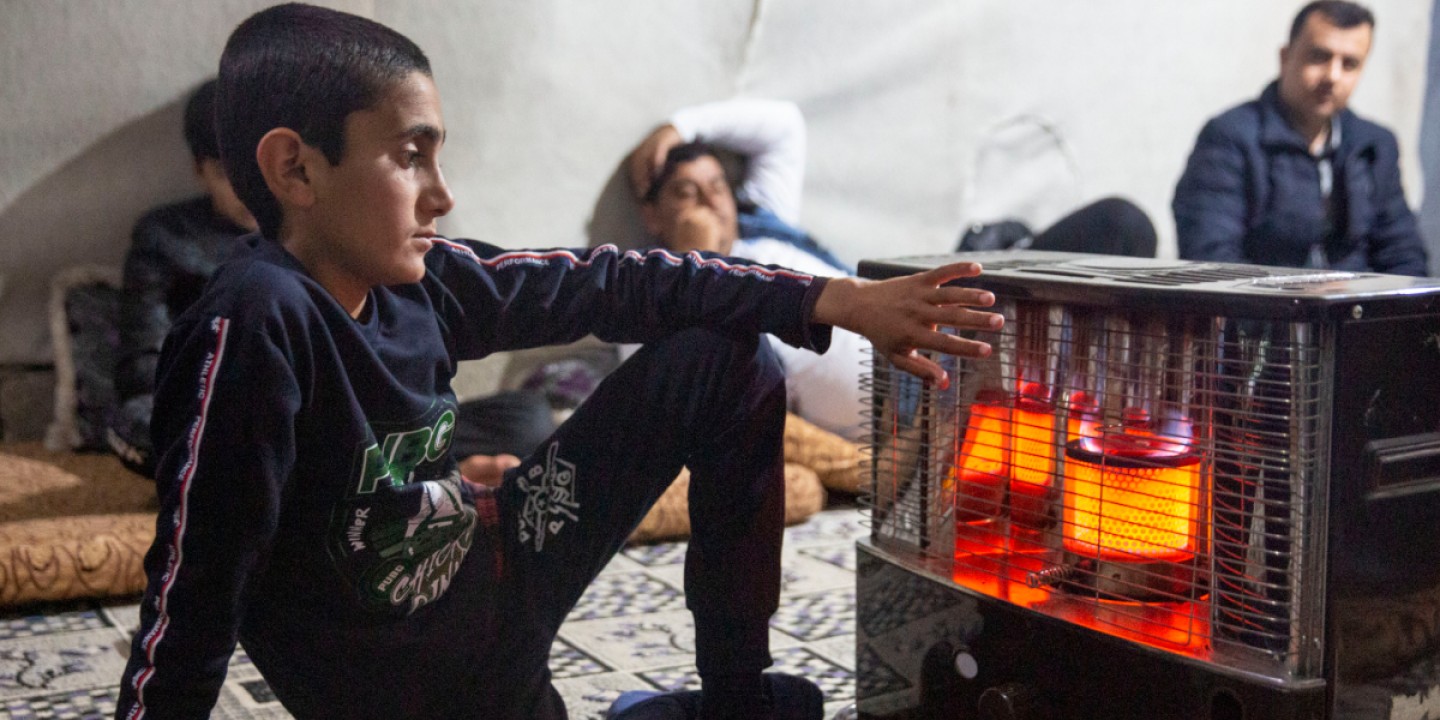Yazidi boys who survived conscription by ISIS begin path to healing
In camps for displaced people in northern Iraq and a home for survivors in Syria, the staccato testimonies, glazed eyes, and malnourished bodies of boys who left Baghouz in recent weeks hint at the depth of their trauma.

(The Christian Science Monitor) The Islamic State’s so-called caliphate may have come to an end, but the terror the militants inflicted on the small Yazidi religious community is forever seared into the minds of boys like ten-year-old Dilber. He often curls into a ball and cries nonstop.
He reached what was left of his family in mid-March after fleeing Al-Baghouz, a speck of land on the banks of the Euphrates in Syria where ISIS had battled a US-backed coalition of Kurdish and Arab forces.
Dilber, his 15-year-old brother Dildar, and others in their generation were indoctrinated and beaten after ISIS attacked their villages in the Sinjar Mountains in 2014, executing their fathers and enslaving their mothers and sisters.
Dilber and Dildar spent the final days of the caliphate in March sleeping in ditches, drinking leftover wash water, and begging civilian families for one daily portion of rank soup. Both struggle to speak Kurdish after years of being commanded in Arabic.
Read our latest issue or browse back issues.
“It took us just two days to learn how to use a rifle, but the Qur’an took forever,” Dildar said. “They beat us if we didn’t learn the religion quickly enough. I have memorized about a quarter of the Qur’an. The ones who failed to memorize the Qur’an would be beaten with sticks and water hoses.”
His cousin, Hani, spent more than a year in captivity before being rescued through smugglers along with his mother.
“It takes a long time to learn your language and get rid of their ideology,” Hani said. “Sometimes ISIS ideas pop into your head: Memorize the Qur’an! Forget your infidel family!”
Ziad Avdalo, a Yazidi, runs a home on the outskirts of Amuda in northern Syria for survivors waiting to cross back into Iraq. For some, it’s difficult to know where their homes were.
“One six-year-old boy didn’t even know his own name,” Avdalo said. “Another didn’t know the name of his father.”
The Autonomous Administration, a proto-government operating in northeast Syria, grants the Yazidi House about $1,000 per month, but that barely covers costs. The Kurdish Red Crescent helps by providing basic medical treatment. The boys are also recovering from trauma and indoctrination.
“We have boys who have arrived here more fundamentalist than ISIS,” Avdalo said. “Those who are very dogmatic we deal with very lightly and simply, until their memories come back.”
In the dozens of camps for displaced people in northern Iraq and at Yazidi House in Syria, Yazidi teenage boys recount being forced to renounce their religion. The staccato testimonies, glazed eyes, and malnourished bodies of those who left Baghouz in recent weeks hint at the depth of their trauma.
Yet in camps such as the one in Dohuk, there are only a handful of psychologists for everyone.
Among those reunited with family after staying at Yazidi House was 15-year-old Bassim, who underwent military and religious training under ISIS.
“I always had hope I would get out,” he said.
Bassim’s father, Qassim, survived, one of only 19 men to do so when ISIS took Sinjar. Bassim’s mother and older brother are among the thousands still missing.
“Many Yazidi children are mixed in with foreign ISIS families or even Syrian and Iraqi families, but nobody cares to check where they are,” Qassim said. “They’re scattered in IDP camps in Turkey, Syria, and Iraq. Some may have even ended up in the Gulf.”
Many Yazidis have left Iraq, finding asylum in Australia, Germany, and the United States, among other nations. Avdalo and some other community leaders see that as detrimental.
“It is better they stay in their land, among their people,” Avdalo said. “We have a lot of experience now when it comes to healing.”
A version of this article appears in the print edition under the title “Yazidi boys who survived conscription by ISIS begin path to healing.”






